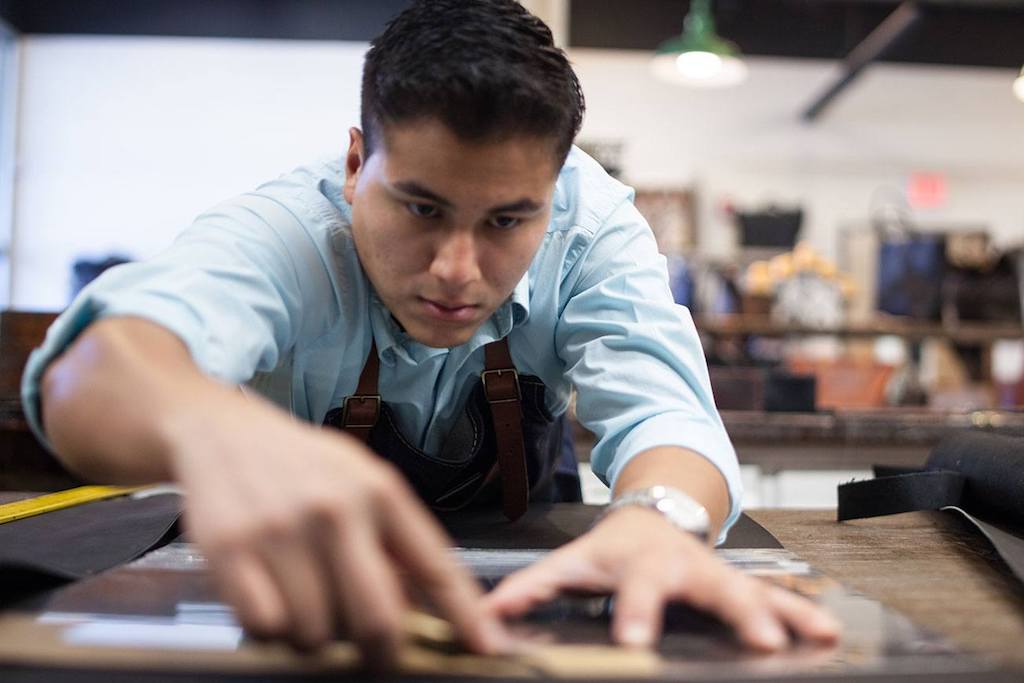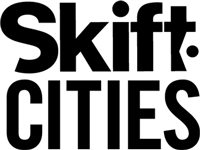Skift Take
Travel Portland's convention sales team is promoting the idea that "individuals attract individuals" to show conference planners how the city celebrates a diverse spectrum of local makers with a unique and creative point of view.
This post is original content created by the SkiftX brand strategy team for our Skift Cities platform. Learn more about what SkiftX can do for partners here.
This sponsored content was created in collaboration with a Skift partner.
MadeHere PDX is a store located in Portland’s trendy Pearl District that sells locally-made products ranging from sustainable knit caps to organic pet food. On weekends, visitors can come by to “meet the makers… who design, roast, stitch, bake, weld, brew, and build some of the coolest stuff in the world.”
Portland is at the forefront of the maker movement spreading across the country, where individual entrepreneurs create unique products with both traditional tools and modern manufacturing innovations such as 3D printing and laser cutters. Makers, in general, embrace artisanal craftsmanship, local materials or ingredients, and a fierce spirit of community collaboration.
Another example is ADX Portland, with the mission of: “Building a Community of Thinkers and Makers.” The 24,000-square-foot facility is a co-working space for designers and craftspeople to collaborate on projects and fabricate prototypes, working either as hobbyists or indie entrepreneurs. Scheduled public tours are available to watch people working in the wood, metal, jewelry, print, and digital media workshops.
Travel Portland, the city’s destination marketing organization, has been leveraging its maker community for years to showcase the city as an incubator of local creative talent, and thereby, a magnet for travelers with a creative bent.
“Oregonians are very independent so there’s always this spirit about how we’re going to do it our way,” Jeff Miller, CEO of Travel Portland, told Skift a few years ago. “We were farm-to-table before it was called that. We’ve been making microbrews forever. We built amazing public transportation. It’s really in the DNA of Portland, about how we’re going to do things differently here. So what’s next? We think it’s going to be our maker culture that continues to differentiate us.”
More recently, Travel Portland has been using the same strategy to engage conference planners and differentiate the city in the meetings and events industry.
“Travel today is about the experience, and that’s not just leisure — it’s also conventions,” says Steve Faulstick, chief sales officer at Travel Portland. “It used to be you’d be inside the convention center the whole time. Now there are less dinners and things like that so attendees can experience the city, and that’s where Portland thrives as a tight-knit community with a lot of creativity and energy. So, as a planner, you’re not having to create everything in the agenda.”
To promote that vibe to conference planners more aggressively, the Travel Portland convention sales team now brings members of the local maker community with them during sales missions and industry conferences.
A list of those makers can be found here, including MadeHere PDX and ADX Portland. Also, the Portland Made organization categorizes the city’s makers by specialty, and it posts community developments and events supporting the growth of local small businesses.
Faulstick says the energy and community drive behind the maker movement gives his team a whole new series of authentic Portland stories to share with planners. But, why do those stories resonate with planners and their attendees?
“Individuals attract individuals,” he explains. “That ‘it’ factor we have as a unique destination has been driven by a lot of the entrepreneurial spirit of our makers in Portland. So when we bring makers with us on the road, that experience really reflects who and what Portland is.”
Maker Communities Drive Diversity
Today, within the context of urban and tourism development, the definition of makers has expanded to include almost any independently owned small business that adds to the quality of life and community experience in any local neighborhood — in effect, helping “make” the community. That can include local chefs, butchers and bakers, spirit makers, coffee brewers, fashion and furniture designers, jewelry and accessory makers, and all sorts of retail outlets.
The common thread binding makers together is their shared desire to create the type of vibrant and unique neighborhood they want to live in. Conference attendees, according to Faulstick, want to experience the same thing when they visit a city.
“Attendees are always asking, ‘Where do the locals go?'” he says. “And so, when we do site visits with planners, that’s where we go. The Portland story isn’t just about downtown. The real story is getting out into the neighborhoods for that community vibe. That’s what attendees want, and in my mind, attendees are driving every conference decision these days.”
Moving forward, Travel Portland is striving to drive more exposure to local minority makers like Christopher Bevans, who designs futuristic athleticwear. According to Travel Portland’s webpage, Portland Designers of Color:
“Born in Brooklyn to parents of Jamaican and Belizean descent, Christopher Bevans graduated from the Fashion Institute of Technology. Bevans then worked for Sean John and began designing for stars like Kanye West, Prince, Jay Z and LeBron James. In 2006, Bevans moved to Portland to serve as Nike’s global design director of urban apparel. These days, he’s breaking new fashion ground with DYNE, a technologically advanced line of men’s athletic and outerwear.”
By providing a platform for more local minority entrepreneurs, Travel Portland can customize maker visits and experiences for individual conference groups more effectively. At the same time, the bureau is also helping support economic development in previously underserved neighborhoods like Central Eastside, which is emerging as a wellspring for new creative talent in Portland.
“We’re actively seeking out and finding more makers of color,” says Faulstick. “We’re just hyper-aware that we need to fully appreciate and support everyone and everything that we have in Portland to provide the diversity of experiences that planners are demanding today.”
‘The Difference Is Worth The Distance’
As a conference destination, Portland doesn’t have the meeting space capacity or the volume of non-stop airlift that some competing destinations have up and down the West Coast. Therefore, when Travel Portland showcases the city’s maker community and their spirit of individuality, the overarching purpose is to convince planners to look beyond purely logistics when sourcing potential host cities for their events.
As discussed in the 2018 Skift Trends Report: “The Rise of Midsize Cities in The Meetings Industry,” year-over-year price increases in first-tier gateway markets are driving planners to look more strategically at secondary markets like Portland. Hotel rates, for example, are expected to increase 3.5 percent in the U.S. in 2018, according to American Express Meetings and Events’ 2018 Global Meetings and Events Forecast.
However, airlift accessibility remains a primary challenge for midsize cities, so their convention and visitor bureaus need to elevate their city’s strongest points of differentiation in order to convert planners.
Faulstick says that airlift capacity in Portland is up 30 to 40 percent over the last five years, so the issue of direct access “has evolved from a definite negative to being much more neutral.” Still, any midsize city usually requires more attendees to make more connecting flights than they would flying into a global gateway destination, which is a big consideration for planners when they have a group of 2,000 people.
“For Portland, we explain it simply as: ‘The difference is worth the distance,’” says James Jessie, senior VP of convention sales at Travel Portland. “The city of Portland has recognition worldwide, and we know people want to experience it. The demand is clearly there. So our priority is to explain what makes us different, because we might not always be a direct flight away, but it’s going to be worth it, including what you take away from your time here.”
Jessie adds that Travel Portland’s focus on local maker culture is more than window dressing. It’s not about just having a new story to tell, he says, it’s about how planners can integrate makers into their event programming.
“We’re always identifying the most innovative elements coming out of our city, and then we’re telling planners they can visit the makers with their groups or invite them into their shows,” he says. “There’s so much to do and so many things to experience in so many veins in Portland that involves our makers. It’s become a big decision-maker now when planners are choosing a destination.”

The above content was produced by the branded content SkiftX team for the upcoming Skift Cities platform, defining how cities are connecting visitors and locals to co-create the future of urban industry and livability.
Have a confidential tip for Skift? Get in touch
Tags: meetings and events, portland, skift cities
Photo credit: Orox is a multigenerational leather shop in Portland. Travel Portland


